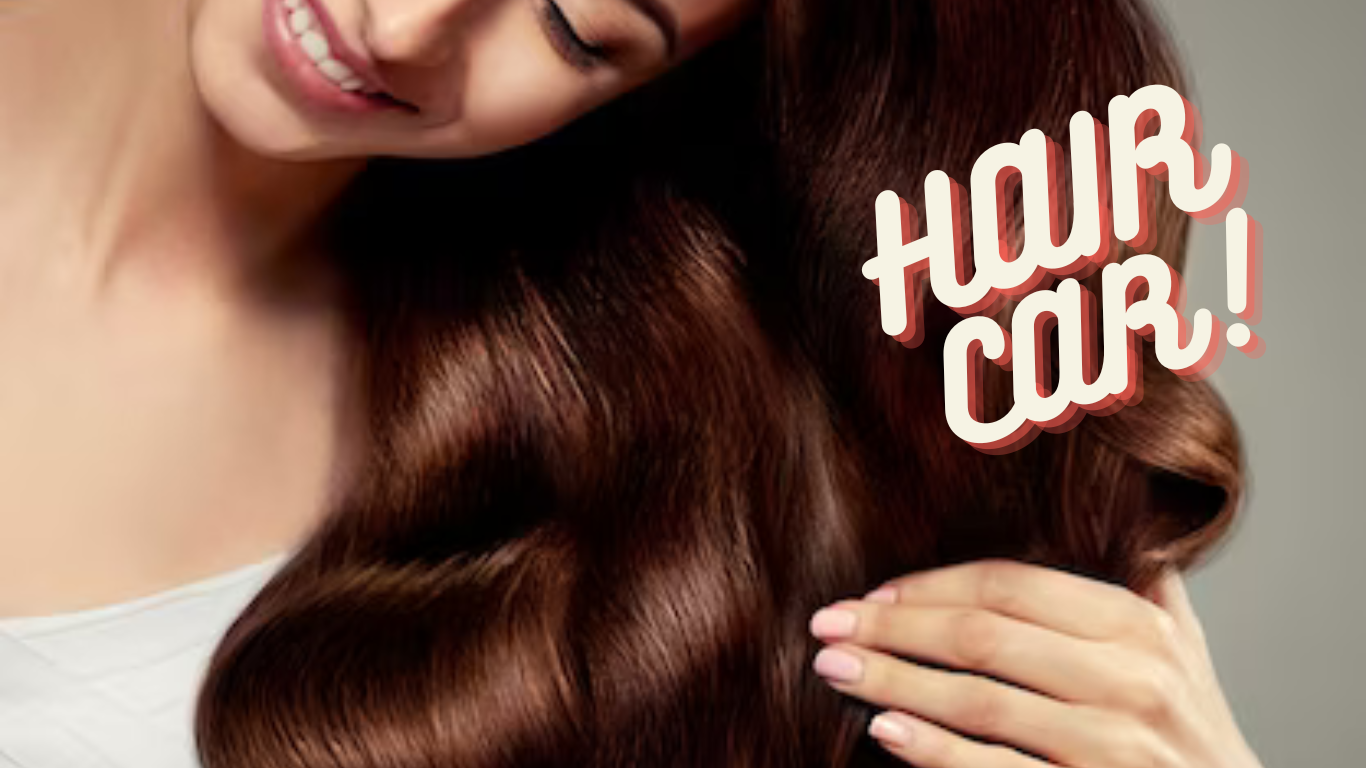Dive into the world of hair care with our comprehensive guide on shampoo and conditioner, tailored to cater to all hair types and concerns. Discover your perfect hair care match today!
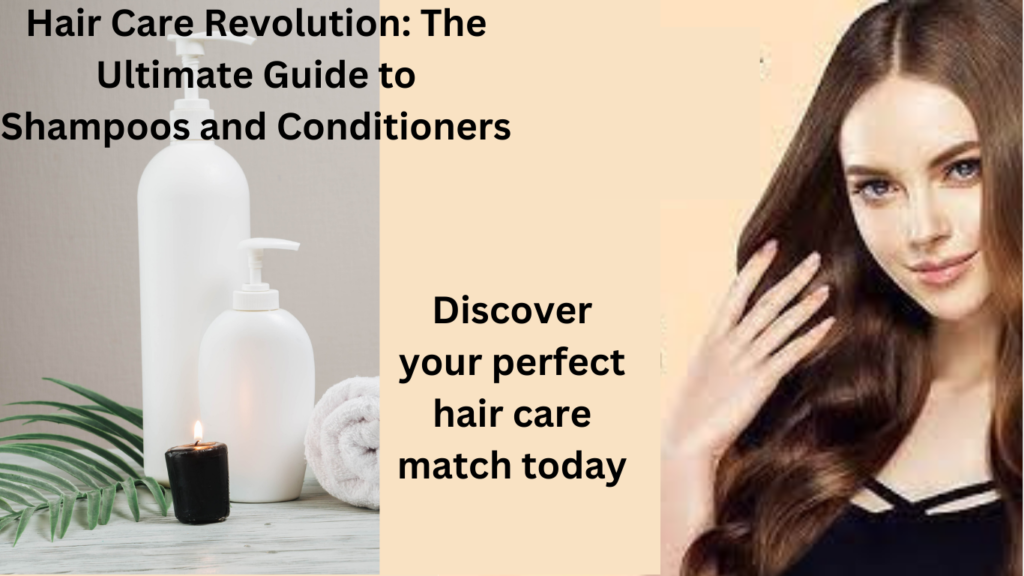
Introduction: The Ever-Changing World of Hair Care
Shampoo and conditioner are pivotal within the dynamic and ever-evolving world of hair care, wherein the quest for the ideal duo can feel like an ongoing journey. In this guide, we simplify the search for the best shampoo and conditioner, imparting insights and practical guidelines to assist you in making well-informed decisions.
We’ll delve into the vital venture of selecting the right shampoo and conditioner for your particular hair type. In this article, we explore the most recent developments and trends in the field of hair care.
Understanding Key Ingredients in Shampoo and Conditioner
| Ingredient | Role in Product | Benefits | Considerations |
|---|---|---|---|
| Sulfates | Cleaning agents that create lather | Effective in removing dirt and oil | Can be harsh on sensitive scalps; may strip natural oils |
| Silicones | Provide smoothness and detangling properties | Impart shine and manageability | A humectant that attracts moisture |
| Parabens | Preservatives to extend shelf life | Prevents the growth of bacteria and mold | Linked to skin irritation and potential health concerns |
| Natural Oils | Hydrating and nourishing components | Promote hair health, shine, and strength | Choose based on hair type (e.g., coconut oil for dry hair) |
| Proteins | Strengthen hair structure | It helps repair and protect hair from damage | Overuse can make hair stiff or brittle |
| Glycerin | Balance used to avoid over-moisturizing | It keeps hair hydrated and prevents dryness | May irritate sensitive individuals |
| Alcohol | Used in some formulas for quick drying | Can help with drying time and product spreadability | Can be dried if used in high concentrations |
| Fragrances | Adds scent to the product | Enhances user experience | It can be dried if used in high concentrations |
This table details common ingredients in shampoos and conditioners, their roles, benefits, and points to consider. Understanding these components can help you choose the best products for your hair type and concerns.
Shampoo and Conditioner for Different Hair Types: Comprehensive Details
- For oily hair:
- Use shampoos that are specifically labeled for oily hair; these often contain ingredients like salicylic acid or witch hazel to control excess oil.
- Lightweight, balancing conditioners should be applied mainly to the ends, avoiding the scalp.
- Regular washing is necessary, but over-washing can stimulate more oil production.
- For dry hair:
- Nourishing shampoos use ingredients like honey, aloe vera, or almond oil to add moisture.
- Deep conditioning treatments or masks can be used weekly for extra hydration.
- Limit heat styling and chemical processes that can further dry out hair.
- For curly hair:
- Cream-based, sulfate-free shampoos help maintain natural moisture and curl patterns.
- Conditioners with slip agents like silicone or natural oils for easier detangling
- Leave-in conditioners or curl-defining creams can enhance and define curls post-wash.
- For color-treated hair:
- Shampoos with low or no sulfates and those labeled as ‘color-safe’ or ‘for colored hair’.
- Conditioning treatments with proteins and amino acids to repair and seal color
- Avoid hot water rinses, as they can strip color faster.
- For fine hair:
- Volumizing shampoos that boost root lift and the body without leaving residue.
- Use conditioners sparingly, and choose types that promote volume and light hydration.
- Avoid heavy oils and silicones in products that can flatten fine hair.
- For thick hair:
- Shampoos with hydrating and soothing ingredients help manage and soften thick hair.
- Rich conditioners, often labeled ‘for thick or coarse hair‘, can help control frizz.
- Hair masks or serums may be necessary for extra moisture and frizz control.
- For Dandruff-Prone Hair:
- Anti-dandruff shampoos with active ingredients like ketoconazole, tar, or salicylic acid
- Scalp treatments and conditioners with tea tree oil or peppermint can provide relief.
- Avoid heavy styling products that can build up on the scalp and exacerbate dandruff.
- For aging hair:
- Shampoos with antioxidants protect against environmental damage and hair aging.
- Moisturizing conditioners contain vitamins and oils to restore shine and flexibility.
- Products that provide scalp care are crucial, as a healthy scalp supports hair health.
- For damaged hair:
- Protein-rich shampoos repair hair cuticles and strengthen strands.
- Conditioners and leave-in treatments with keratin or other proteins are used to reconstruct hair.
- Minimize the use of heat styling tools and harsh chemical treatments.
- For Sensitive Scalp:
- Gentle, sulfate-free shampoos with calming ingredients like oatmeal or chamomile
- Natural or organic conditioners are free from artificial fragrances and colors.
- Regularly use scalp-soothing serums or oils to reduce irritation and inflammation.
General tips for shampoo and conditioner:
- When using new products, always run a patch test to ensure they don’t irritate your skin.
- Consider the local climate and environmental factors; humid climates may require different hair care products than dry climates.
- Regular trims and a balanced diet can also significantly improve hair health and appearance.
Beneficial Shampoo Ingredients for Different Hair Types
Shampoo for Dry Hair
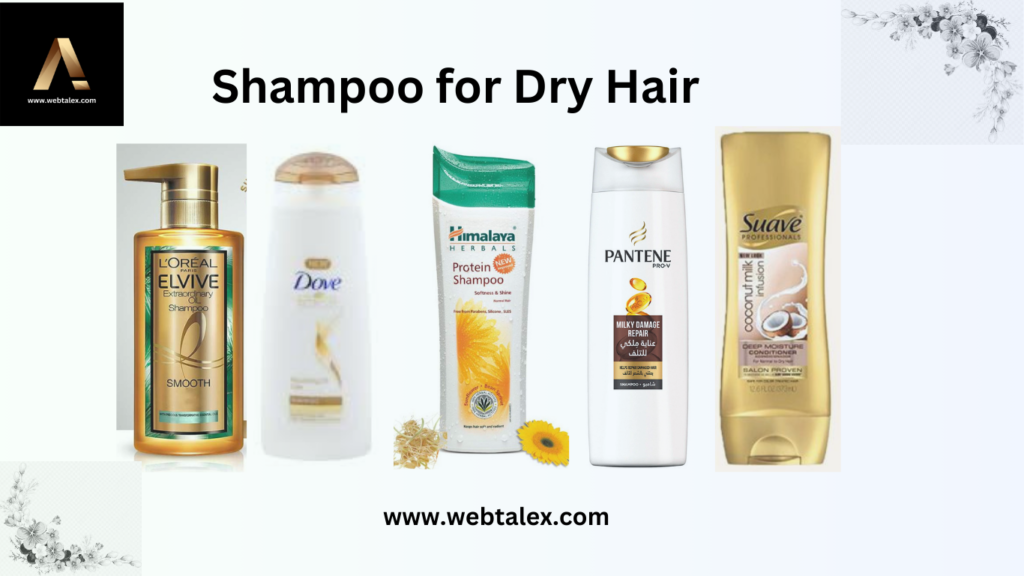
| Hair Type | Key Hydrating Ingredients | Purpose | Shampoos |
|---|---|---|---|
| Dry Hair | Argan Oil, Coconut Oil, Olive Oil, and Jojoba Oil | It adds moisture, lessens dryness, and enhances texture | 1. L’Oreal Paris Elvive Extraordinary Oil Shampoo |
| Glycerin (Humectant) | 2. Dove Nourishing Oil Care Shampoo | ||
| Shea Butter, Aloe Vera (Emollients) | 3. Himalaya Herbals Protein Shampoo: Softness and Shine | ||
| 4. Pantene Pro-V Milky Damage Repair |
This table provides a comprehensive overview of a few shampoos specifically formulated for dry hair with key hydrating ingredients like natural oils, glycerin, and emollients. These products are designed to add moisture, reduce dryness, and improve hair texture.
Shampoo for Oily Hair
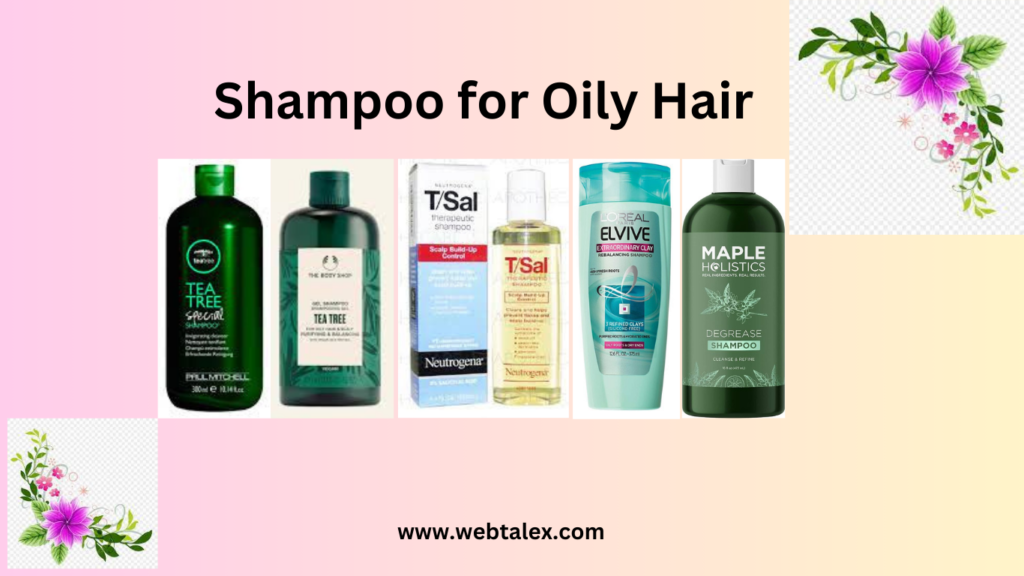
| Hair Type | Key Clarifying Ingredients | Purpose | Shampoos |
|---|---|---|---|
| Oily Hair | Tea Tree Oil | Balances oil production and deeply cleanses the scalp | 1. Paul Mitchell Tea Tree Special Shampoo |
| Witch Hazel | Reduces greasiness and soothes the scalp | 2. The Body Shop Tea Tree Oil Shampoo | |
| Salicylic Acid | It exfoliates the scalp and removes excess oil | 3. Neutrogena T/Sal Therapeutic Shampoo | |
| Citrus Extracts | It refreshes hair and provides a thorough cleanse | 4. L’Oreal Paris Elvive Extraordinary Clay Shampoo |
This table offers a selection of a few shampoos, specifically tailored for oily hair. These products contain key clarifying ingredients like tea tree oil, witch hazel, salicylic acid, and citrus extracts, which help in balancing oil production, deep cleansing the scalp, and reducing greasiness.
Color-Treated Hair Shampoo

| Hair Type | Key Protective Ingredients | Purpose | Shampoos |
|---|---|---|---|
| Color-Treated Hair | Sulfate-Free Detergents | Preserve color and prevent fading | 1. L’Oreal Paris Elvive Color Protect Shampoo |
| Amino Acids | Enhance color vibrancy and strengthen hair | 2. Schwarzkopf Bonacure Color Freeze Shampoo | |
| UV Protectants | Protect hair from sun damage | 3. Sunsilk Co-Creations Vibrant Color Shampoo | |
| Argan Oil | Maintain hair health, add shine, and add softness | 4. OGX Renewing Argan Oil of Morocco Shampoo |
This table provides a selection of a few shampoos specifically formulated for color-treated hair. These products contain essential protective ingredients like sulfate-free detergents, amino acids, UV protectants, and argan oil. They are designed to preserve hair color, prevent fading, and maintain overall hair health.
Dandruff Shampoo
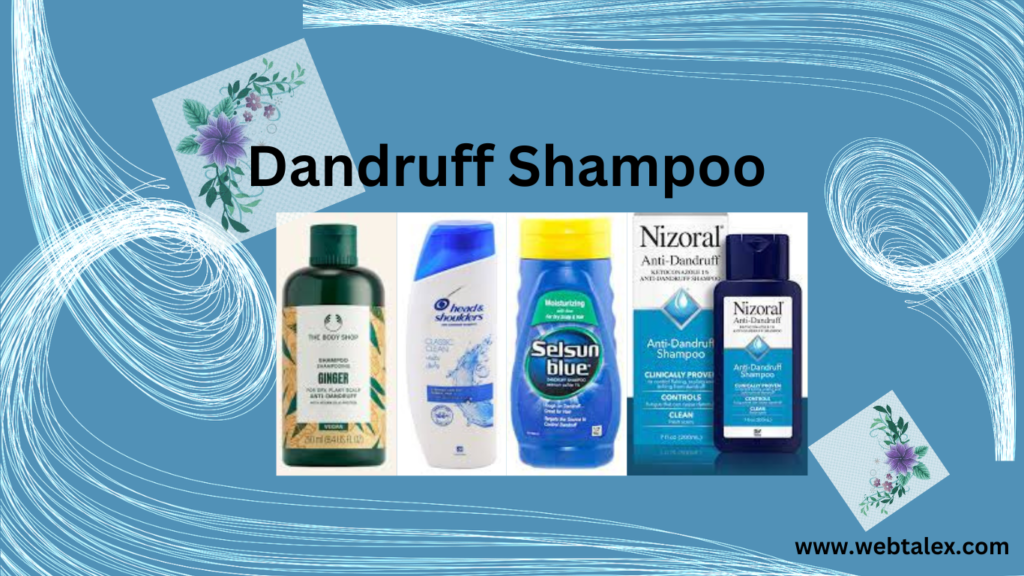
| Hair Concern | Key Anti-Dandruff Ingredients | Purpose | Shampoos |
|---|---|---|---|
| Dandruff | Tea Tree Oil | Soothes scalp, natural antifungal properties | 1. The Body Shop Ginger Anti-Dandruff Shampoo |
| Pyrithione Zinc | Reduces dandruff and controls scalp bacteria | 2. Head & Shoulders Classic Clean Shampoo | |
| Selenium Sulfide | Slows down the growth of skin cells on the scalp | 3. Selsun Blue Medicated Shampoo | |
| Ketoconazole | Treats fungal infections causing dandruff | 4. Nizoral Anti-Dandruff Shampoo |
This table lists a few shampoos for dandruff control, featuring key ingredients like tea tree oil, pyrithione zinc, selenium sulfide, and ketoconazole. These shampoos are formulated to effectively control flaking, reduce itching, and maintain a healthy scalp.
Sensitive Scalp
| Hair Concern | Key Soothing Ingredients | Purpose | Shampoos |
|---|---|---|---|
| Sensitive Scalp | Aloe Vera | Soothes the scalp and hydrates | 1. Aloe Veda Mild Nourishing Shampoo |
| Chamomile | Calms irritation, reduces inflammation | 2. Aveeno Skin Relief Soothing Shampoo | |
| Oatmeal | Relieves discomfort; gentle cleansing | 3. The Body Shop Ginger Scalp Care | |
| Hypoallergenic Formulations | Minimizes allergic reactions and is gentle on scalp | 4. Free and Clear Shampoo |
This table presents a few shampoos specifically formulated for sensitive scalps with soothing ingredients like aloe vera, chamomile, oatmeal, and hypoallergenic formulations. These products are designed to reduce inflammation, soothe the scalp, and minimize allergic reactions.
Best shampoo for damaged hair
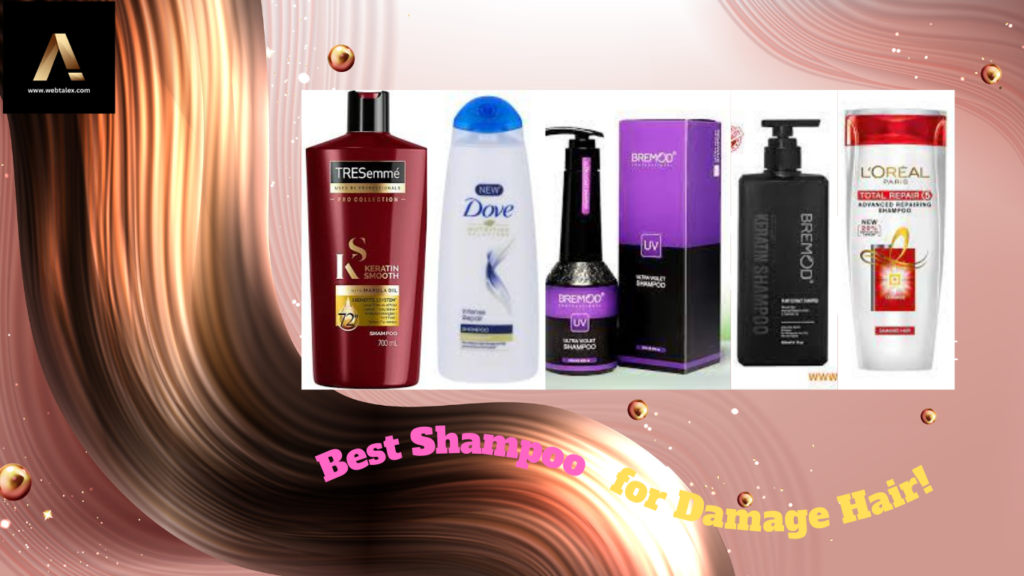
| Hair Concern | Key Repairing Ingredients | Purpose | Shampoos |
|---|---|---|---|
| Damaged Hair | Protein (Keratin) | Rebuilds and strengthens hair structure | 1. TRESemmé Keratin Smooth Shampoo |
| Ceramides | Restores hair cuticle, enhances resilience | 2. L’Oréal Paris Total Repair 5 Shampoo | |
| Amino Acids | Nourishes and repairs hair fibers | 3. Sunsilk Co-Creations Damage Reconstruction Shampoo | |
| Natural Oils (Argan, Coconut) | Moisturizes and revitalizes damaged hair | 4. Dove Intense Repair Shampoo |
This table provides a selection of few shampoos, specifically designed for damaged hair. They incorporate key repairing ingredients like protein (keratin), ceramides, amino acids, and natural oils to rebuild, strengthen, and moisturize damaged hair, restoring its health and vitality.
Shampoo for Aging Hair
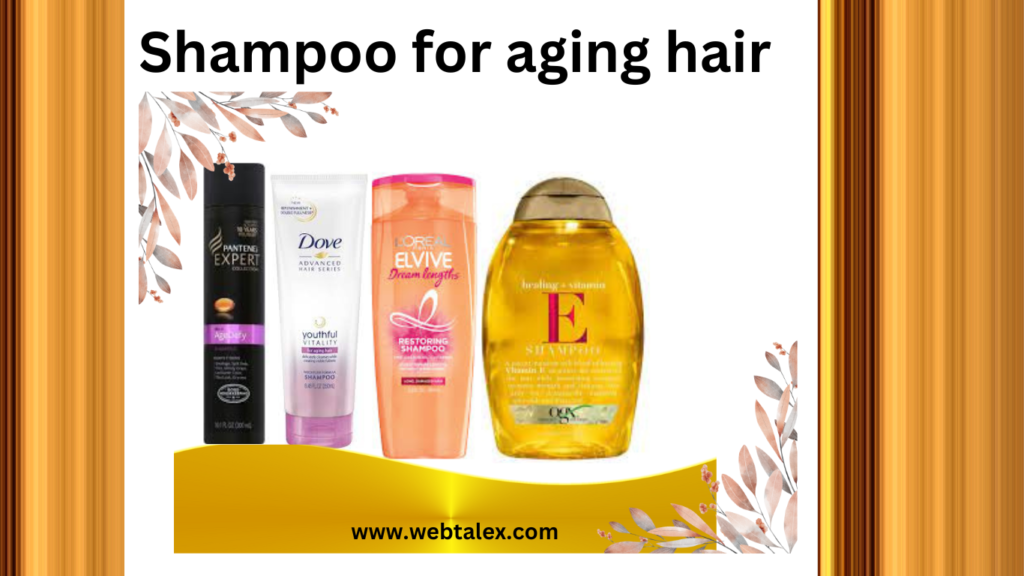
| Hair Concern | Key Ingredients | Purpose | Shampoos |
|---|---|---|---|
| Aging Hair | Antioxidants | Protect against environmental damage and hair aging | 1. Pantene Pro-V AgeDefy Shampoo |
| 2. Dove Advanced Hair Series Youthful Vitality Shampoo | |||
| Scalp-Nourishing Components | Promote a healthy scalp to support overall hair health | 3. L’Oréal Paris Age Perfect Golden Age Shampoo | |
| 4. OGX Anti-Aging + Vitamin E Shampoo |
This table lists a few shampoos that are specifically formulated for aging hair. They contain key ingredients like antioxidants for protection against environmental damage and components that nourish the scalp, crucial for maintaining healthy hair
Shampoo and Conditioner Ingredients to Avoid
- Sulfates (Sodium Lauryl Sulfate, Sodium Laureth, and Sulfate)
- Why Avoid: Can strip hair of herbal oils, leading to dryness and irritation, particularly for dry, curly, and color-treated hair?
- Parabens (e.g., Methylparaben, Propylparaben)
- Why Avoid: When used as preservatives, they can cause skin irritation and pose fitness dangers.
- Silicones (e.g., Dimethicone)
- Why Avoid: They can overwhelm certain hair types, mainly pleasant and thin, and build up on the scalp.
- Alcohols
- Why Avoid: Some types (like denatured alcohol) can be drying, which is detrimental for dry and curly hair types.
- Synthetic Fragrances
- Why Avoid: It can cause scalp irritation and allergic reactions, particularly for sensitive scalps.
- Phthalates
- Why Avoid: Often found in fragranced products, linked to health concerns.
- Formaldehyde and Formaldehyde Releasers
- Why Avoid: Used as preservatives, they are potential irritants and have health risks.
- Mineral Oil
- Why Avoid: It can create buildup on the scalp and inhibit the hair’s natural ability to breathe.
- Heavy Waxes (e.g., Paraffin)
- Why Avoid: Can weigh down hair, leading to a greasy appearance, especially for fine or oily hair types.
Choosing the right shampoo and conditioner requires expertise in your hair type and its unique needs. It’s equally important to be aware of which ingredients are probably dangerous or counterproductive for your hair.
Always take a look at the factor list on shampoo bottles to make knowledgeable choices about your hair care products.
Shampoo and conditioner with Beneficial Ingredients for dry, damaged, or chemically treated hair
- Hydrolyzed Silk and Animal Protein
- Function: These proteins help repair and strengthen hair by penetrating the hair shaft and replenishing protein lost due to damage.
- Benefits: Ideal for damaged or brittle hair, they improve the hair’s elasticity and overall health.
- Glycerin
- Function: Its purpose is to attract moisture to the hair as a humectant.
- Benefits: It’s extremely good for hydrating dry hair, lowering frizz, and making hair feel softer and more viable.
- Dimethicone and Simethicone
- Function: These are silicones that coat the hair surface.
- Benefits: They add shine and smoothness and help detangle hair. They also protect hair from heat and environmental damage. However, they can build up on the scalp and hair through the years.
- PVP, or polyvinylpyrrolidone
- Function: In hair care products, this polymer serves as a binder and stabilizer.
- Benefits: It helps in forming a film over hair strands, aiding in styling, and holding the hair in place.
- Propylene Glycol
- Function: Works as a humectant and conditioner.
- Benefits: It facilitates preserving moisture inside the hair, making it ideal for dry hair types. It is also helpful as a useful resource in the absorption of different components.
- Stearalkonium Chloride
- Function: A conditioning agent originally developed as a fabric softener.
- Benefits: It’s effective at making hair easier to comb and reducing static electricity. It also imparts softness and shine to the hair.
These ingredients are formulated to address specific hair concerns. For instance, proteins like hydrolyzed silk are top-notch for repairing damaged hair, while humectants like glycerin are exquisite for adding moisture to dry hair.
Silicones provide a swish look and protect the hair, although they might not be suitable for all hair types due to potential buildup. It’s important to choose a shampoo and conditioner that align with your specific hair needs and type.
Tips for using shampoo and conditioner effectively
When it comes to shampoo and conditioner, using them correctly can make all the difference in achieving healthy and luscious locks. Here are a few hints to help you get the most from your hair care habits:
- Start with an amazing shampoo. Choose a shampoo that is appropriate for your particular hair issues and hair types. Look for one that is gentle enough to cleanse without stripping away crucial oils.
- Focus on your scalp: When shampooing, be aware of massaging the product into your scalp to remove any buildup or extra oil. This will assist you in maintaining a healthy scalp and save you from any problems with dandruff or itchiness.
- Rinse thoroughly: Make certain to very well rinse the shampoo out of your hair to avoid any residue that might weigh it down or make it appear dull.
- Apply conditioner from mid-duration to the ends. Avoid applying conditioner immediately to your scalp, as it can result in greasiness. Instead, start applying it from the mid-lengths of your hair to the ends, where it is most wanted.
- Leave it on for the recommended time. Follow the instructions on the conditioner bottle for the recommended time to go away for your hair. This will permit the product to penetrate and provide the most advantages
- See a wide-toothed comb: After making use of conditioner, use a huge-toothed comb to detangle your hair softly. This will save you from any pointless breakage or damage.
By following these guidelines, you can ensure that you are using shampoo and conditioner effectively for healthier, more lovely hair. In the subsequent section, we can delve into the world of herbal and natural hair care products. Stay tuned for a few terrific hints!
Conclusion: Empowering Your Hair Care Choices
- Understand Your Hair Type:
- Identify whether your hair is dry, oily, color-treated, or has other specific needs.
- Choose shampoos and conditioners formulated for your particular hair type.
- Key ingredients matter:
- Look for hydrating ingredients like natural oils and aloe vera for dry hair.
- Opt for clarifying ingredients like tea tree oil for oily hair.
- For color-treated hair, select products with sulfate-free detergents and UV protectants.
- Choose anti-dandruff shampoos with active ingredients like pyrithione zinc for dandruff control.
- Frequency of use:
- Determine how often to wash your hair based on its type and condition.
- Over-washing can strip natural oils, while under-washing can lead to buildup.
- Application Techniques:
- Apply shampoo primarily to the scalp, and conditioner to the mid-lengths and ends.
- Gently massage the scalp when shampooing to promote blood circulation.
- Environmental Factors:
- Consider external factors like climate, pollution, and water quality in your hair care routine.
- Use protective products if exposed to chlorinated water, salt water, or excessive sun.
- Lifestyle and diet:
- Maintain a healthy diet rich in vitamins and nutrients for overall hair health.
- Minimize stress and avoid excessive heat styling or harsh chemical treatments.
- Professional Advice:
- Seek advice from hair care professionals, especially when dealing with specific issues like hair loss or scalp problems.
- Regular trims and professional treatments can help maintain hair health.
- Product Quality:
- Invest in good-quality shampoos and conditioners that suit your hair type.
- Be wary of products with harmful chemicals and excessive fragrances.
- Continuous Learning:
- Stay updated with the latest hair care trends and products.
- Be open to trying new products and techniques that could benefit your hair.
By following these guidelines, you can make more informed choices about selecting and using shampoos and conditioners, leading to healthier hair and a more effective hair care routine.
FAQs:
1. Which shampoo and conditioner is best for hair?
The high-quality shampoo and conditioner rely on your hair type and specific needs.
- For dry hair, look for merchandise with hydrating components like argan oil or shea butter.
- For oily hair, choose clarifying shampoos with ingredients like tea tree oil or citrus extracts.
- For color-treated hair, choose sulfate-free products with UV protectants and amino acids.
- For dandruff, shampoos with pyrithione zinc, selenium sulfide, or tea tree oil are effective.
- For damaged hair, products with keratin, amino acids, or natural oils help in repair and rejuvenation.
Always consider your scalp situation as well, and pick products that stabilize the wishes of your scalp and hair.
2. Can I use a 2-in-1 shampoo and conditioner?
Yes, you could use 2-in-1 shampoo and conditioner products, particularly if you have trustworthy hair care or want a time-saving answer. However, they’ll not be as powerful as using separate products because:
- Shampoos are designed to eliminate oils, dirt, and product residues.
- Conditioners, then again, are meant to feature moisture, shield, and detangle hair.
- A two-in-one product may not be able to perfectly balance these two distinct functions.
If you have specific hair concerns like severe dryness, damage, or dandruff, specialized individual products are recommended.
3. Which is better: conditioner or shampoo?
Neither is “better,” as both serve different but complementary purposes.
- Shampoo cleans the scalp and hair, removing dirt, oil, and product buildup. It’s essential for maintaining scalp health and hygiene.
- Conditioner is used after shampoo to rehydrate, protect, and smooth the hair. It helps in detangling, reducing frizz, and adding shine.
Both are essential for a complete hair care routine, addressing different aspects of hair health.
4. Is using shampoo with conditioner good?
Using shampoo followed by conditioner is generally considered good practice
- Shampoo cleanses the hair and prepares it for conditioning.
- Conditioner helps to replenish moisture and nutrients lost during the shampooing process.
- When tailored to your hair type, this combination can improve overall hair health, appearance, and manageability.
Remember to apply shampoo primarily to the scalp and conditioner mainly to the ends and mid-lengths of the hair to avoid weighing down roots or causing scalp buildup.
5. How often should I use shampoo and conditioner?
The frequency of shampooing and conditioning largely depends on your hair type and daily activities.
- Normal to Dry Hair: Typically, washing 2-3 times a week is sufficient. Overwashing can remove the natural oils, which can lead to dryness.
- Oily Hair: May require more frequent washing, like every other day, to manage excess oil.
- Active Lifestyles: If you’re frequently sweating or exposed to dirt, more regular washing is beneficial.
- Color-Treated or Chemically Treated Hair: Less frequent washing helps preserve color and prevent damage.
Listen to your hair’s needs, as over-washing or under-washing can both affect hair health.
6. Can children use the same products as adults?
Children’s hair and scalp are more delicate than adults, necessitating gentler care.
- Specially Formulated Products: It’s advisable to use shampoos and conditioners specifically designed for children, as these are typically milder and less irritating.
- No Harsh Chemicals: Children’s products are usually free from harsh chemicals and strong fragrances, reducing the risk of scalp irritation or allergic reactions.
Using adult hair care products on children is not recommended due to the difference in hair and scalp sensitivity.
7. What’s the Best Way to Switch to a New Hair Care Product?
Transitioning to a new hair care product should be a gradual process:
- Start Slow: Introduce the new product by alternating it with your current one. This gradual introduction helps your hair and scalp adjust.
- Observe Changes: Pay attention to how your hair responds after each use. Look for improvements or any adverse reactions.
- Give It Time: Some products may show results only after several uses. Hair typically takes time to adjust to new formulations.
- Scalp Health: Monitor your scalp for any signs of irritation or discomfort during the transition period.
Remember, all hair types are unique, and the products that work for one person may not be effective for another
Related Articles:
- Hair Care Revolution: The Ultimate Guide to Shampoo and Conditioner 2023-2024
- Hair Health in 2023–2024: Transform Your Locks into a Radiant Reflection of You
- Top 5 Powerful Secrets Behind Hand and Foot Whitening Cream
- Best 20 Beauty Whitening Cream: Illuminate Your Beauty
- Simple Party Makeup Guide: Master a Flawless Look for 2023–2024!

As the dedicated voice of Webtalex.com, I’m committed to delivering the latest and most inspiring content in beauty and health. I aim to keep you informed on the newest trends and holistic wellness, helping you look and feel your best. Join me for insightful beauty techniques, wellness tips, and much more to enrich your lifestyle.

